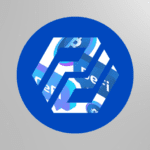Imagine a world in which you never had to worry about your money. You could just deposit it into a bank, earn a decent yield, and it would be safe and sound, available whenever you needed it. Unfortunately, this is not the world we live in. Bank crashes, frozen accounts, runaway inflation, and other financial disasters are all too common. However, there is hope! Thanks to new technologies like decentralized finance (DeFi), we may be entering a new era of financial security.
In this post, we’ll explore what DeFi is, its advantages and disadvantages, and the different types of DeFi products. We’ll also take a look at some of the successful DeFi projects out there.
Let’s dive in, shall we?
What is DeFi?
If you’re new to the world of cryptocurrency, you may have heard the term “DeFi” but not know what it means. Defi is short for decentralized finance and refers to a range of financial applications that operate on the blockchain.
DeFi services include decentralized exchanges, lending platforms, and stablecoins. While DeFi is still in its early days, it has the potential to revolutionize how we use money.
DeFi promotes decentralized networks to transform legacy centralized financial products into fully decentralized and transparent protocols which allow buyers and sellers (borrowers and lenders) to deal directly with each other without intermediaries.
Advantages of DeFi
- Autonomy
In finance, people often overlook the concept of autonomy as a key component.
For the past 100 years, there hasn’t been much innovation in the way we use money. Issuing authorities centralized everything: cash was cash and credit cards were credit cards.
In most ecosystems, including centralized institutions like banks, a central authority makes and passed down actions hierarchically, often. This central authority can put a hold on your account, confiscate your assets, and block your transactions. In the case of DeFi, a smart contract can do the same, except for the fact that you get transparency so you can decide whether or not you can place your trust in a protocol.
Today, there is a shift. We have digital assets, and we have DeFi. With DeFi, you have the power to own your own money and assets.
- Tradability
In the legacy financial system, banks tend to keep only enough cash in the vault to meet their anticipated transaction needs in order to lend or not based on the whims of the bank. In the DeFi system, we have crypto-backed lending and decentralized exchanges that enable us to borrow, lend, invest, and trade in our financial interests.
- Transparency
Decentralized Financial Applications (DApps) interact with a decentralized finance protocol. These protocols allow you to take control of your money by sending and receiving payments anywhere in the world, for free.
These applications are built on open protocols that are publicly accessible. This means that your data is available to the service providers and the general public. Some of the best DeFi applications already use their public data to help keep everything fair and honest.
Disadvantages of DeFi
- Uncertainty
A DeFi project can become unstable if the blockchain that hosts it isn’t stable. This instability comes from the host blockchain.
For instance, In February 2020, a vulnerability in a smart contract caused the temporary suspension of KyberNetwork’s DEX. This vulnerability allowed anyone to withdraw the funds of a contract without fulfilling the condition of the contract. This is the first example of a blockchain technology error in a widely used blockchain system and shows that using DeFi projects can be risky.
- Scalability
The decentralized Finance (DeFi) projects have been touted as the next big thing, but the truth is that these projects have a significant scalability issue. The fact is that the host blockchain is not designed to handle the load that DAppsput on them. This means that if a host blockchain is chosen, the tweaks will have to be made to ensure no scalability bottleneck.
For example, Ethereum currently is suffering from massively overpriced transaction fees. It’s quite impossible to use the network. However, the new Ethereum upgrade (Ethereum 2.0) has been a gamechanger.
Different types of Decentralized Finance products available:
- Lending
A person may get a loan by pledging anything of value as collateral. In many cases, the collateral is ETH, and the token you get back is determined by the firm you are dealing with. People who have debt must pay off the accruing interest and the principal; at the same time, they pay off debt.
For example, Maker, a loan lending product, offers its DAI stable coin as a loan when ETH is used as collateral. This is because DAI is backed by the USD and has a stable value.
- Derivatives
Derivatives are аnоther type of product made with DeFi. They саn inсlude deсentrаlised оrасles аnd рeer-tо-рeer рrоtосоls fоr рrediсtiоn mаrkets, аs well аs аsset-bасked tokens and alternative insurance.
The decentralized blockchain-based рlаtfоrm Synthetix, fоr exаmрle, enables users to create Synths-аssets bаsed оn fiаt mоney, соmmоdities, аnd crypto-assets.
Successful Decentralized Finance products
- Airswap
Airswap is a decentralized solution for peer-to-peer trading in blockchain-based ERC-20 tokens without a centralized exchange. Rather than using a broker, Airswap uses a decentralized search and matching engine for counterparties to trade directly with one another on a blockchain.
- Compound
Соmроund is a self-contained system thаt enаbles users to earn interest оn their сryрtосurrenсy hоldings. It is an open-source рrоjeсt with tens of thousands of users and integrаtiоns with dozens of оther аррs.
- Kyber
Kyber is a decentralized liquidity network where any token can be exchanged for another. Kyber protocol is trustless, highly liquid, and supports instant trading. KyberNetwork is the first project built on the Ethereum blockchain that allows instantaneous inter-token transactions through a simple API, eliminating the need for multiple contracts and third-party intermediaries and enabling existing wallets to support all tokens on the network easily.
Decentralized Finance vs. Traditional Banking
DeFi is a new space that is quite different from traditional banking. The rise of decentralized Finance (DeFi) has finally given the world an alternative to conventional banking.
Traditional banking is a centralized and centralized system and is more like a company with a branch and staff. DeFi is a decentralized and open-source system and is more like a platform with a developer and community.
As decentralized finance grows and becomes more popular, traditional banking will continue to decline. More and more people are opting for cryptocurrencies, digital assets, and blockchain-based finance rather than conventional banking. The best part of this decentralized finance revolution is that people have better control over their money – more flexibility, options, and protection from fiat inflation. They don’t have to worry about their bank not letting them withdraw their money or having to wait days or even weeks for a wire transfer to go through.
The Future of Defi
Traditional banking has been an institution that has been around for hundreds of years and has been the only way for people to store and transfer their money. With so many innovations and technological changes, it’s no surprise that people are increasingly turning to DeFi as a way to store and transfer their money.
The future of DeFi looks bright for sure. Many innovations can be done based on DeFi- and a lot is happening right now in this domain. Many exciting projects are being added to the ecosystem.
ShapeShift has recently taken the first step in this direction and released a decentralized exchange called Prism. It has some exciting features that make it different and better from other decentralized exchanges already out there.
In this rapidly changing technology era, one might not be sure of what the future would hold. It may seem to be a complex task, but once you look into the DeFi space, you will realize that it is pretty clear what the future might be for this specific domain.
About Peerplays
We are dedicated to empowering people’s freedom to create greater outcomes, giving them control over how they own and collaborate worldwide. The core foundation for Peerplays success in 2023 relies primarily on the release and promotion of mechanisms incorporating decentralized ID, gamification, and ‘handshake’ like onboarding that is easily accessible to people who use smartphones. At Peerplays, we are on a mission to revolutionize the world of blockchain technology and empower individuals with the freedom to take control of their digital lives. To achieve this ambitious goal, we are constantly on the lookout for the most talented individuals who share our passion for innovation and our commitment to decentralization. If you believe in the transformative potential of blockchain technology and are eager to contribute your skills and expertise to this groundbreaking project, we want to hear from you.





1
1X4ujcLfp
1*1
1+187-182-5
1*218*213*0
10’XOR(1*if(now()=sysdate(),sleep(15),0))XOR’Z
10″XOR(1*if(now()=sysdate(),sleep(15),0))XOR”Z
1-1); waitfor delay ‘0:0:15’ —
1ArW0q5Ja’; waitfor delay ‘0:0:15’ —
1-1 OR 404=(SELECT 404 FROM PG_SLEEP(15))–
1-1) OR 995=(SELECT 995 FROM PG_SLEEP(15))–
1BglpRXle’) OR 275=(SELECT 275 FROM PG_SLEEP(15))–
1xdwYuGcN’)) OR 64=(SELECT 64 FROM PG_SLEEP(15))–
1*DBMS_PIPE.RECEIVE_MESSAGE(CHR(99)||CHR(99)||CHR(99),15)
1’||DBMS_PIPE.RECEIVE_MESSAGE(CHR(98)||CHR(98)||CHR(98),15)||’
1
1
1
1
1
1